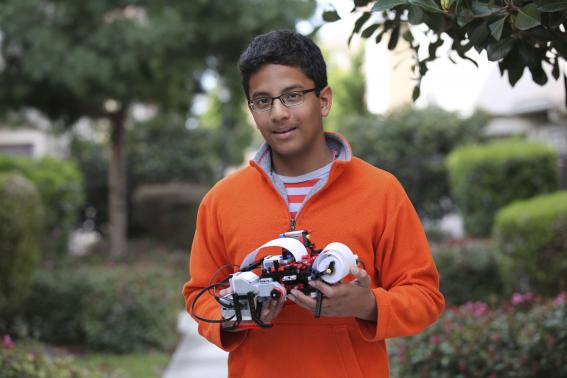13-year-old Shubham Banerjee has secured funding from Intel to bring his low-cost Braille printer to market.
Exact terms of the agreement were not disclosed, but it’s being reported that the sum is somewhere in the neighborhood of “a few hundred thousand dollars.”

The California teenager gained significant popularity when he showed off the prototype version of his invention at the White House. At the time it was made with a Lego kit, and he was just 12 years old.
“We welcome investment in technology that aims to improve everyday life for blind and partially sighted people, and especially applaud this brilliant initiative from such a young entrepreneur,” said Clive Gardiner, head of reading and digital services at the Royal National Institute of Blind People.
“Electronic Braille has great potential, but has been hindered to date by high device costs for users,” he added. “New innovations for low-cost Braille printers such as this one . . . can transform reading choices for people with sight loss who read Braille. We look forward to hearing more about its progress.”
Until Intel got involved, Banerjee’s company — Braigo Labs — had been working off of $35,000 worth of cash from parents to turn his science fair project into a legitimate Silicon Valley startup.
His invention, referred to at the Braigo v1.0 printer, used Lego’s Mindstorms EV3 robotics kit as well as some additional parts from a local home renovations store. The user writes text via an attached keypad, which the machine converts into Braille, and then prints out the raised bumps on a scroll of paper.
The Braigo v1.0 landed Banerjee numerous awards and a spot at the White House’s inaugural Maker Faire. He has since begun work on a second version, which is powered by Intel’s budget-friendly Edison chip and uses some 3D-printed parts.
“It is less power-hungry and has the future possibilities of using batteries . . . in remote places of the world,” Banerjee said while demonstrating the work-in-progress at an event hosted by Intel.
“The capabilities of Edison enabled me to do a whole set of use cases I hadn't previously thought about.
“For example, when we wake up in the morning we look at our smartphone or tablet to see the headline news.
“With Edison, we've set it up so the CNN headlines are printed off automatically every morning.”
Banerjee hopes to soon begin selling a commercial model of his Braille printer that will cost around $350; that’s approximately a fifth of the price of the lowest-cost alternatives.
Via BBC
Advertisement
Learn more about Intel





